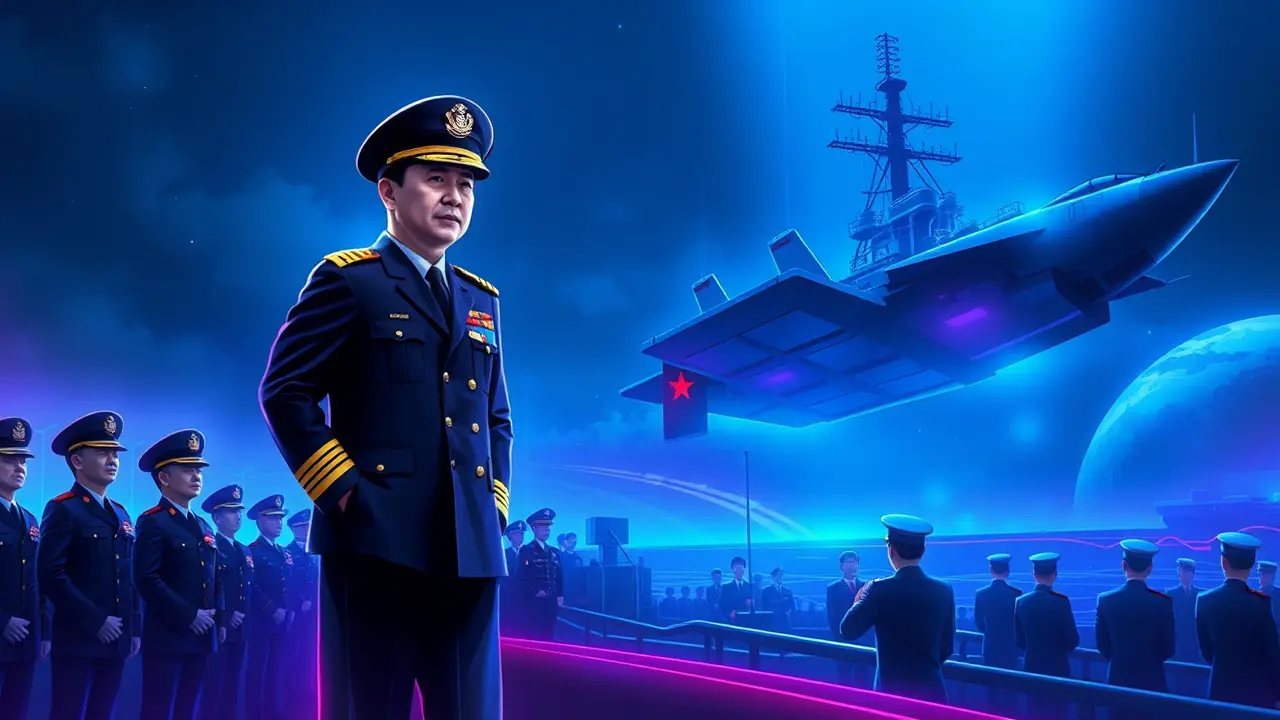
Politicsconflict & defenseMilitary Operations
Potential New Commander for Chinese Navy Amid Joint Operations Focus
RO
Robert Hayes
3 hours ago7 min read
In a strategic elevation that underscores Beijing's accelerating ambitions for integrated maritime dominance, Vice-Admiral Cui Yuzhong, a seasoned naval aviation officer, has emerged as the acting commander of the People's Liberation Army Navy. The significance of this appointment was telegraphed during the high-profile commissioning ceremony for the formidable Fujian aircraft carrier in Hainan last week, where state broadcaster CCTV footage meticulously positioned Cui as the highest-ranking naval officer present, walking deliberately behind President Xi Jinping himself—a visual hierarchy rich with political and military meaning.At 61, Vice-Admiral Cui brings a specialized background in aviation to the helm, a deliberate pivot that signals a profound doctrinal shift away from traditional, siloed naval warfare toward a fully-realized joint operations paradigm where air, surface, and subsurface assets must operate as a single, seamless fist. This is not merely a personnel change; it is a statement of intent.The Fujian, China’s first domestically-built carrier outfitted with modern electromagnetic catapults, represents a quantum leap in power projection capability, moving the nation closer to its stated goal of a 'world-class military' by mid-century. Cui’s presumed leadership, placed within this context, suggests a command structure being meticulously groomed to wield this complex new tool effectively against a backdrop of escalating tensions in the South China Sea and the perennial strategic dilemma posed by Taiwan.One can draw historical parallels to the U. S.Navy’s own evolution under Admiral Chester Nimitz, who masterfully integrated airpower from fast carrier task forces to achieve decisive victory in the Pacific Theater—a lesson not lost on modern PLA strategists who study such campaigns intently. The choice of an aviator echoes a global trend, seen in the appointments of similar leaders in other major navies, recognizing that control of the seas in the 21st century is inextricably linked to control of the air above them.Analysts at the Naval War College have long pointed to jointness as the critical vulnerability—and now, the primary focus—of PLA modernization efforts. This move directly addresses that, aiming to fuse the once-distinct branches of the PLA into a cohesive force capable of complex, multi-domain operations that could stretch from the first island chain deep into the Pacific.The consequences are far-reaching: for the United States and its allies, it signifies a competitor that is not only expanding its hardware but also sharpening its command-and-control software, making it a more sophisticated and unpredictable adversary. For regional powers like Japan and Australia, it necessitates a recalibration of their own maritime strategies and a deeper integration into American-led security architectures.Domestically, it reinforces President Xi’s unwavering commitment to military modernization as a cornerstone of national revival, a project to which no resource is spared. However, challenges remain; integrating such a vast and traditionally bureaucratic structure is a Herculean task, fraught with inter-service rivalries and the immense logistical complexities of coordinating carrier battle groups with land-based aviation and missile forces. The coming years will test whether Cui Yuzhong can translate this doctrinal vision into operational reality, ultimately determining whether China’ navy can transition from a coastal defense force to a genuine blue-water peer capable of challenging American primacy on the world's oceans.
#PLA Navy
#leadership appointment
#joint operations
#Fujian aircraft carrier
#featured
Stay Informed. Act Smarter.
Get weekly highlights, major headlines, and expert insights — then put your knowledge to work in our live prediction markets.
© 2025 Outpoll Service LTD. All rights reserved.